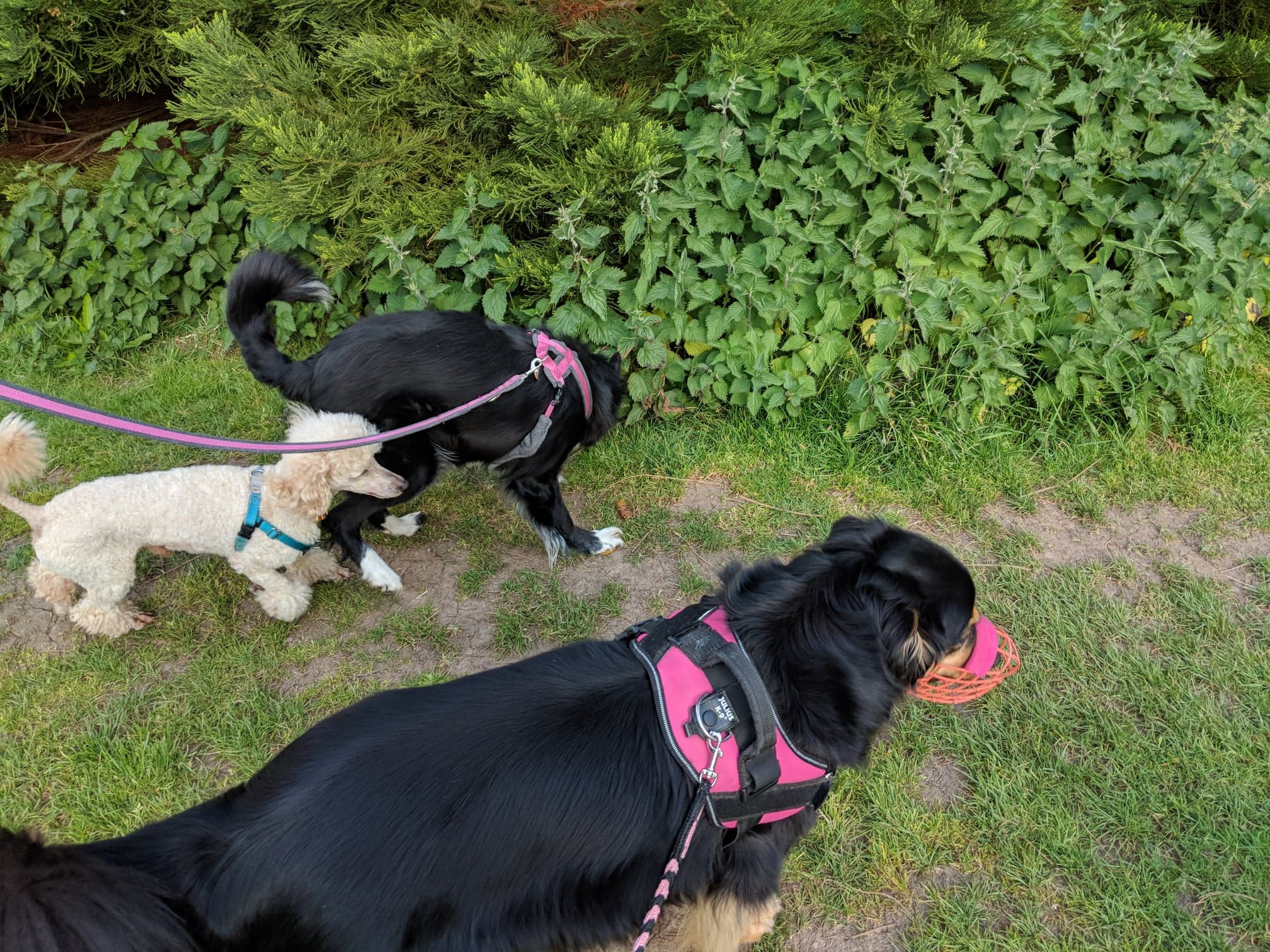One of the interesting things I’ve observed recently is how much simple Choice Training changes life for those of us blessed with a Growly Dog - a reactive, anxious, aggressive, dog.
Of course, I always knew that! But it’s great to hear it come back from students and folk on my recent Workshop. That was all about Choice Training - training your dog by offering him a choice instead of telling him what to do.
And the results have been remarkable for many people!
They were surprised - and delighted! - to find that their growly dog was much better able to cope after only a couple of days of trying this new approach. Well, it was new for many of them …
For help with your reactive, anxious, aggressive, “growly” dog, get our free email course here.
THIS FREE ECOURSE IS A BONUS FOR YOU WHEN YOU SIGN UP TO RECEIVE EDUCATIONAL EMAILS AND OCCASIONAL OFFERS FROM ME. YOU CAN UNSUBSCRIBE AT ANY TIME.
Privacy Policy
Privacy Policy
How can a few simple games change my reactive dog?
What happens is that - through offering your dog a choice and not continually “commanding” him what to do - you build a completely new relationship with your pet!
No longer are you yelling and dancing, coaxing and cajoling, to try and get what you want. Instead you have a happy companionship where your dog is keen to do what you want because it’s what he wants too!
What I love about this way of training is that the dog doesn’t have to “be trained” at all. So how does the change happen? By you, the OWNER, changing!
Simple as that! Once you change your ways, your dog will just change with you.
And while you’re building up this amazing new bond between you, your anxious dog is getting less anxious, your reactive dog is able to cope much better with his fears, and your aggressive dog finds that - with you on his side - he doesn’t need to be aggressive any more.
I love my dog but …
Many people come to me saying “I love my dog to bits, but …” What’s happening is that they undoubtedly do love their dog, but they don’t actually understand why he’s doing what he does. They know there’s a disconnect there, but are unaware how to fix it.
Once they start using Choice Training, things change fast. They become a team with their dog. They can now love him with understanding and empathy.
When I’m working with Growly Dogs specifically, I use a lot of strategies and techniques to achieve the desired change in the dog’s behaviour. But these are all based in giving him a choice and letting him decide on a good course of action.
When you have very young children, you have to show them and teach them all the time. Once your child is older, you’re no longer saying “do this, do that,” but you are backing them up in the informed choices that they are now able to make. This is what I aspire to for my Growly Dog students. That they can work together with their challenging dog to get the results they want.
One of the best things about Choice Training is that you can start it with your new puppy when he comes through the door at 7-8 weeks old. People used to say (some unenlightened people still say …) that you can’t train a puppy till it’s 6 months old. Why? It’s simply that the type of training they’re thinking of - harsh, punishment-based training involving physical pain - would be too tough on a puppy.
Why use it on any dog??? It’s quite unnecessary, as you’ll see from any of the 130-odd articles on this site, not to mention the many books, the audiobooks, and my free - as well as paid - programs.
And if a training technique won't work for a toddler, then it likely won't work for a dog —Stanley Coren
Take a look at this post which goes into the whole subject in great detail. There are some academic resources listed there for those of you who want to dig deep!
The fact remains, if you can treat your dog with the same courtesy, kindness and respect that you give to any toddler, then you’ll get the results you want!
For help with your reactive, anxious, aggressive, “growly” dog, get our free email course here.
THIS FREE ECOURSE IS A BONUS FOR YOU WHEN YOU SIGN UP TO RECEIVE EDUCATIONAL EMAILS AND OCCASIONAL OFFERS FROM ME. YOU CAN UNSUBSCRIBE AT ANY TIME.
Privacy Policy
Privacy Policy











